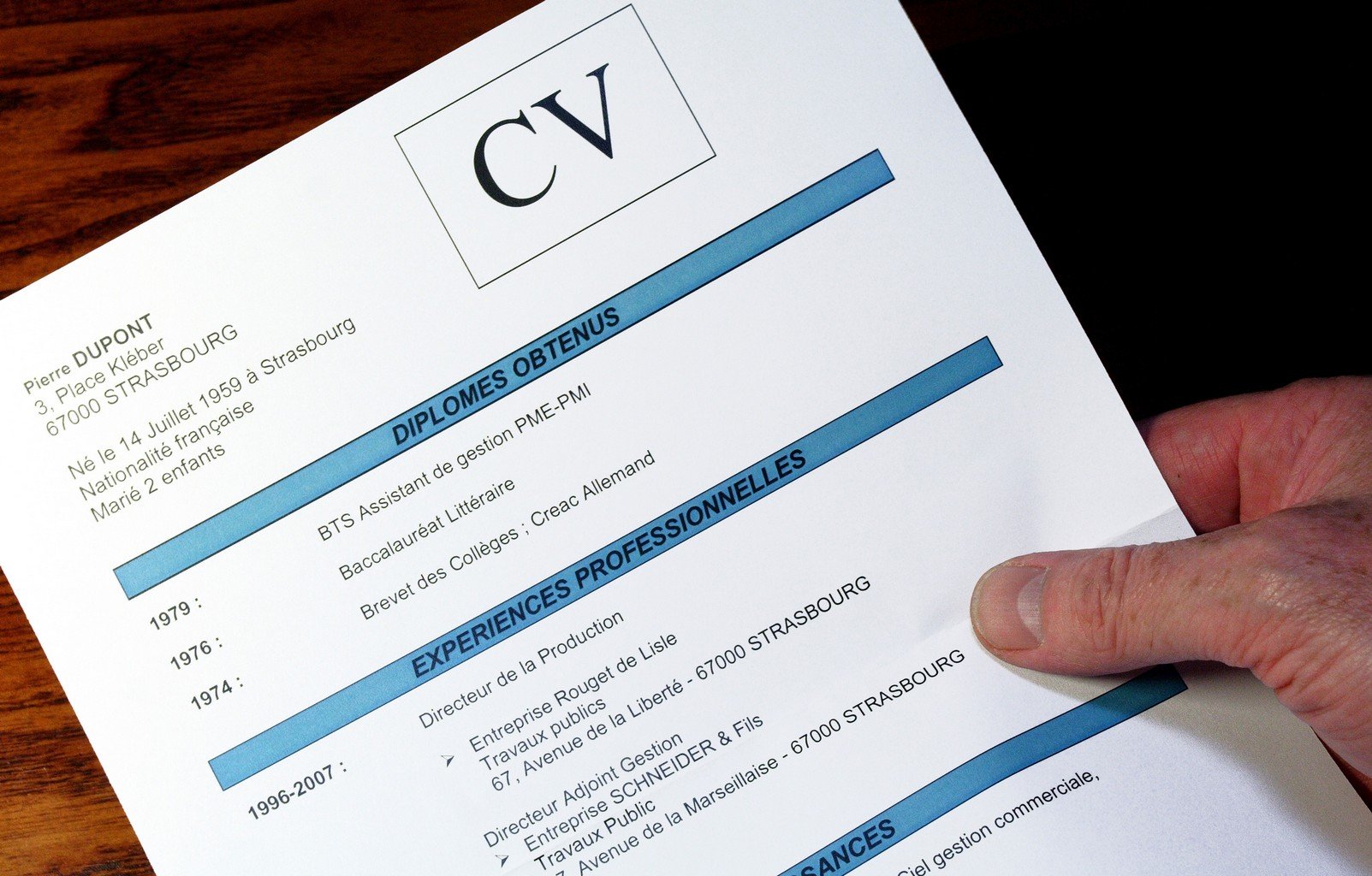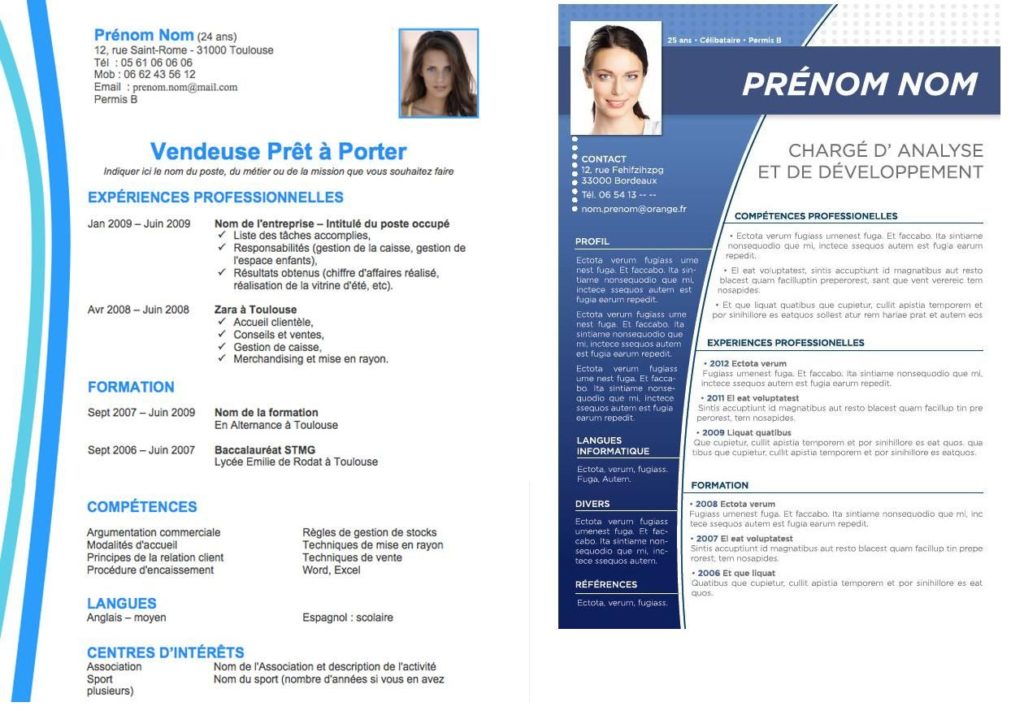How to write a professional Curriculum Vitae?

Landing the job you want isn't easy. Many sectors of the economy are still recovering from the lasting impact of COVID-19, and there is a lot of competition for the good positions. However, the best way to get a job has not changed. Writing a professional resume Promoting your relevant skills, experience and achievements is key to attracting the attention of employers and landing an interview. You should learn to give to receive better in life.
But writing a great resume is easier said than done, especially if you lack formal work experience. To help you succeed in your job search, we explain exactly how to write a great CV in 10 steps.
1. Choose the most suitable format
Before you start writing anything, the first step is to choose the right format for your resume. There are three basic resume formats used by job seekers today: reverse chronological, functional, and combined.

Get 200% Bonus after your first deposit. Use this promo code: argent2035
Each format has advantages and disadvantages depending on how the resume sections are organized:
✔️ Chronological Resume Format
A chronological resume is the most popular format and is suitable for almost all job seekers. It lists your work history in the order you held each position, with your most recent employment listed near the top of the page.
✔️ Functional resume format
A functional resume focuses on your skills rather than your chronological work history, and is primarily used by people changing careers or trying to fill a gap in their job.
The main feature of a functional resume is that it groups your experience into skill categories rather than job titles.
✔️ Combined Resume Format
A combined CV mixes elements of a functional and chronological CV. Combination resumes are typically used by experienced candidates with broad and specialized skills. This resume format includes a chronological work history section as well as a very detailed skills section.
However, just because the timeline format is the most common doesn't mean it's ideal for everyone. If you're changing careers, are a highly skilled specialist in your field, or are trying to minimize an employment gap, you may be better off using the less traditional functional or combination resume formats.
2. Organize your contact details
Now that you know the format you'll be using, it's time to start your resume. First, employers need to know who you are and how to contact you.
Include the following contact information in the header of your CV at the top of the page:
- Name (largest font on the page, middle initial is optional)
- Phone number (check that you have an appropriate voicemail message)
- Email address (make sure it's correct, don't use your account [email protected])
- Link to online portfolio (optional, include if relevant)
- LinkedIn profile (make sure your LinkedIn summary is up to date)
Traditionally, you would also include your mailing address on your resume. However, this is no longer mandatory as most applications are sent by email.
3. Write an introduction to your CV
Placed at the top of your CV, a well-written introduction briefly introduces your key qualifications and skills and convinces employers to continue reading your application.
There are many types of resume layouts used by job seekers today, including:
- CV objective (also called career objective)
- CV summary (also called professional summary)
- Summary of degrees (or summary of degrees)
- Resume profile (sometimes called professional profile)
- Resume personal statement
- Resume “About me” section
However, the two most commonly used introductory styles (and the ones we recommend for most candidates) are the CV objective and the CV summary.
✔️ Recovery objective
A resume objective (or career objective) is a 2-3 sentence statement that outlines your skills and experience, and explains why you are interested in the position. This introduction is best if you are an entry-level candidate, as it focuses on your career ambitions.
✔️ Resume Summary
Resume summaries (sometimes called “professional summaries”) include four to five sentences (in paragraph or bulleted format) that highlight your past accomplishments and skills.
This type of introduction is good for job seekers with some experience and an idea of how to tie the numbers to that experience.
4. Highlight your relevant work experience
Your work experience section is the most essential part of your resume, as it is the best representation of your qualifications.
To create a logical and informative work experience section, list your relevant experience from most recent (top) to least recent (bottom). For each task, provide the following information:
- Your title
- Company Name
- Business location (city and state)
- Hire dates (month and year)
If you are still currently working at a company, you can simply write “[month], [year] – present” for dates of employment.
A general rule of thumb is that each job title includes about 3-5 bullet points of your main duties and accomplishments in that role.
Case in point 1:
Training of more than 5 cashiers, managing their cash limits and ensuring quality customer service at all times.
Example 2:
Led the development of the first fusion of media kits for all company projects, increasing national sales by 8%.
Tailor your experience to the job posting
One strategy to make your experience section even better is to create it with a specific job in mind.
Start by browsing the ad for the position you want. Look for skill-related keywords and profession-specific names in the ad, then feature them in your resume when possible.

Get 200% Bonus after your first deposit. Use this official Promo code: argent2035
This strategy is a great way to strike a chord with the hiring manager and show them that you're the perfect candidate for the position they're advertising.
For an aspiring marketer, there are many linguistic clues spread throughout this advertisement. It is up to the job seeker to capitalize on them.
3 examples of experience points (based on job posting)
The example below shows how to strategically incorporate the verbs and nouns/skills found in the job posting into your work experience section:
Taylord's Marketing Firm, Reno, NV
July 2017 – August 2018
- Collaborates with the Outreach department to develop innovative marketing solutions for 6 unique products
- Developed branded materials for a new mobile app, leading to a 14% increase in sales
- Analyze weekly performance statistics, ensure the effectiveness of outbound marketing activities
5. Create a clear education section
Having a clear education section is essential for your resume, especially if you're a recent college graduate or have minimal work experience.
If you lack work experience but have a good educational background (high grades, club membership, accolades, etc.), your education section should be very detailed to highlight all of your education-related accomplishments.
On the other hand, if you have more than a few years of work experience, it's appropriate to keep your education section short and sweet.
Here are the main points to include in a standard education section:
The names of your university, community college or technical school (do not include high school unless you did not attend college)
- Location of schools (city, state)
- Graduation date (month year)
- Grades or mention (fair, good, very good, etc.)
Also, include relevant courses on your resume if you're a recent graduate and don't have much work experience yet.
✔️ Highlight your relevant professional skills
Recruiters are looking for candidates with skills that are relevant and specific to their position. While listing a bunch of skills on your resume doesn't actually prove you're competent, integrating your various skills into different sections will grab the attention of whoever is reviewing your application.
For example, you can showcase your technical and technical skills in your introduction and work experience section. And of course, you should also list your most valuable abilities (especially any software or technical skills you have) in the skills section of your resume.
✔️ Special Skills
Hard skills are quantifiable job-specific abilities acquired through education, training, or on-the-job experience. For example language skills, computer skills, and the ability to operate heavy machinery all count as types of hard skills.
✔️Cgeneral skills
The general skills, on the other hand, are character traits that have a positive impact on the way you work and interact with others. These are usually natural abilities that cannot be easily taught in a classroom.
Skills such as team spirit, the will to succeed or a good attitude are all soft skills.
✔️ Technical skills
Some careers, such as those in computer science or engineering, require specialized technical skills.
In the tech industry, the skills you need to be successful differ from company to company. A technical skills section is useful for showcasing your knowledge of certain systems, so employers at a specific company can determine whether you are qualified (or not) for the job.
To keep this section from taking up too much space, try breaking it into categories and listing your skills in each. For instance :
- Software : proficiency in Microsoft Office, Visio and Oracle
- Programming languages : Excel to HTML, C++ and Python
✔️ Link between key certifications, awards and distinctions
By now you have already added the basic essentials to your resume. Below are some sections you can add (if possible) to help strengthen it.
✔️ Certifications/licenses
Certifications and licenses are essential to list for some jobs and unimportant for others. For example, nursing has strict licensing requirements, while customer service does not.
Just make sure you know what licenses and certifications to include in your resume before sending it in (if any), as leaving them out could ruin your application by making you look unqualified.
✔️ Publications
Adding a publications section is important for graduate students (if published), scholars, and authors, as it allows them to highlight major examples of their work.
If you are a published scholar, list your articles in reverse chronological order by publication date. And be sure to choose the SEO style that suits your discipline.
It is also acceptable to add works that have not yet been published. You can label them as "Works in progress" or "Submitted for publication".
✔️ Awards/Honours/Activities
If you've received any awards or accolades, whether at work or while studying, your resume is a great place to show them off. Adding relevant awards and accomplishments to your resume helps you stand out from your competition by showing that you're a reliable and dedicated job seeker.
Here are some awards you should consider including on your resume:
- Grants
- Academic honors
- Scholarships
- Volunteer positions
- Professional Affiliations
If you have extra space on your resume, consider adding a dedicated section to showcase your awards.
8. Choose the perfect resume layout
The hardest part is over. You've written your resume and you feel confident about getting that interview. Now is the time to take a moment and think about your resume design.
Depending on the industry you work in or the job you want, you may need to adjust your resume layout to meet the hiring manager's expectations.
✔️ Formal resume layout
When it comes to resumes, newer isn't always better. If you work in a very formal industry like law, finance, accounting, or politics, your resume should stick to a traditional, pragmatic design.
Using classic serif fonts like Times New Roman or Georgia, simple lines, and dark, printable colors like navy blue are great ways to make your resume layout clean and professional.
✔️ creative resume layout
If you work in a field like graphic design, photography, or social media management, it's important that your resume communicates some of your creative talents. This is where a creative resume layout comes in.
Adding splashes of color, backgrounds, skill bars, or icons are all great ways to make your resume more creative and better grab employers' attention.
However, don't add too many styling elements. Your resume should always be primarily text-based and highlight all of your qualifications in a clear, easy-to-read way.
9. Write a matching cover letter
Now that you know how to write the CV of your dreams, you may be wondering: is a cover letter necessary? The answer is yes, always include a cover letter if you can.
Knowing how to write a good cover letter helps you complete every application you send out and increases your chances of landing an interview.
Cover letters are a valuable tool in your job search arsenal because they give you the opportunity to provide context for your resume, show off your personality, and express your enthusiasm for the job you're applying for.
10. Proofread your CV
Once you've written your Curriculum Vitae and cover letter, you're in good enough shape to send in that first application. However, you are not quite done yet.
The most important step before sending a Curriculum Vitae is to proofread it and make sure there are no issues (like spelling or formatting errors) that could lead to rejection of your application.
However, if you want to take control of your personal finances in six weeks, I highly recommend this guide. But first, I would like to present to you this premium training which gives you ctips for business success.
Leave us a ccommentary




















Leave comments